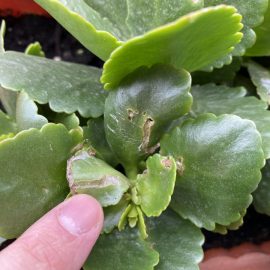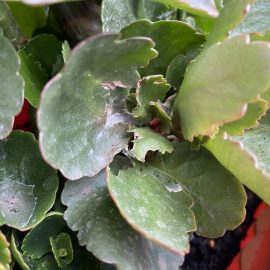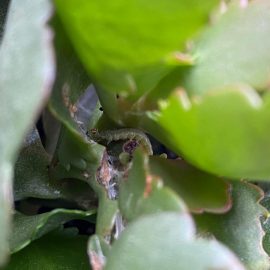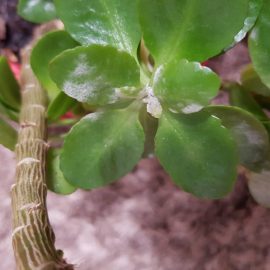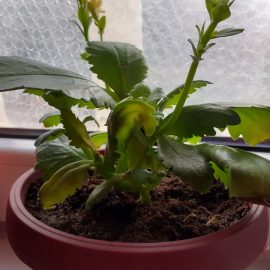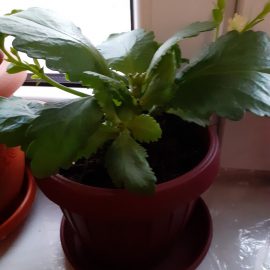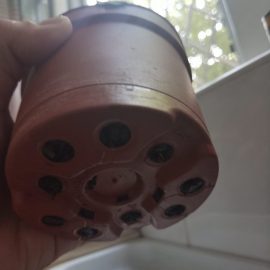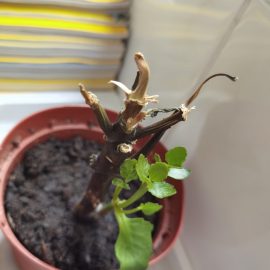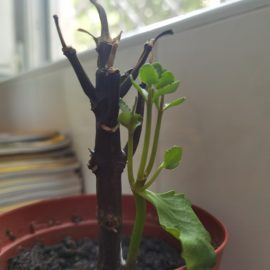Kalanchoe, pest and disease control
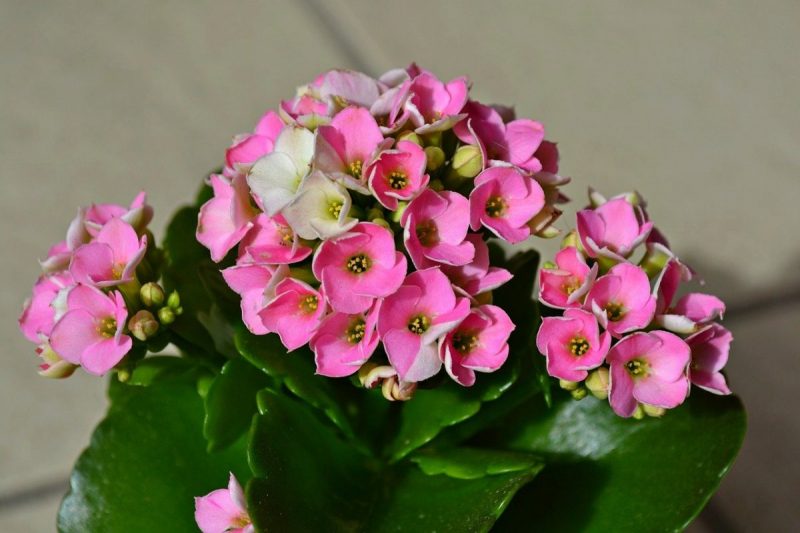
Kalanchoe does not have the same environmental conditions as in its area of origin, so it can be susceptible to diseases and pest attacks. The plants must be tended to according to their requirements, monitored to detect in time the problems that may occur, and if you notice the presence of pests/diseases, it is recommended to isolate the plant in question, so as not to affect others.
Pests
The most common pests that can infest Kalanchoe plants are scale bugs and mealybugs.
To control mealybugs, you can apply treatments with specific insecticides such as:
Recommended products
-
You can find products on a different store
Change Store -
You can find products on a different store
Change Store -
You can find products on a different store
Change Store -
You can find products on a different store
Change Store -
You can find products on a different store
Change Store -
You can find products on a different store
Change Store -
You can find products on a different store
Change Store -
You can find products on a different store
Change Store -
You can find products on a different store
Change Store -
You can find products on a different store
Change Store -
You can find products on a different store
Change Store -
You can find products on a different store
Change Store -
You can find products on a different store
Change Store -
You can find products on a different store
Change Store -
You can find products on a different store
Change Store -
You can find products on a different store
Change Store -
You can find products on a different store
Change Store -
You can find products on a different store
Change Store -
You can find products on a different store
Change Store -
You can find products on a different store
Change Store -
You can find products on a different store
Change Store -
You can find products on a different store
Change Store -
You can find products on a different store
Change Store -
You can find products on a different store
Change Store
To control scale bugs, you can apply treatments with specific insecticides. Because scale bugs are more difficult to control, it is also recommended to use an adjuvant such as:
Recommended products
-
You can find products on a different store
Change Store -
You can find products on a different store
Change Store -
You can find products on a different store
Change Store -
You can find products on a different store
Change Store -
You can find products on a different store
Change Store -
You can find products on a different store
Change Store -
You can find products on a different store
Change Store -
You can find products on a different store
Change Store -
You can find products on a different store
Change Store -
You can find products on a different store
Change Store -
You can find products on a different store
Change Store -
You can find products on a different store
Change Store -
You can find products on a different store
Change Store -
You can find products on a different store
Change Store -
You can find products on a different store
Change Store -
You can find products on a different store
Change Store -
You can find products on a different store
Change Store -
You can find products on a different store
Change Store -
You can find products on a different store
Change Store -
You can find products on a different store
Change Store -
You can find products on a different store
Change Store -
You can find products on a different store
Change Store -
You can find products on a different store
Change Store -
You can find products on a different store
Change Store
Since scale bugs are more difficult to control, the use of an adjuvant is also recommended.
Recommended products
-
You can find products on a different store
Change Store -
You can find products on a different store
Change Store -
You can find products on a different store
Change Store -
You can find products on a different store
Change Store -
You can find products on a different store
Change Store -
You can find products on a different store
Change Store -
You can find products on a different store
Change Store -
You can find products on a different store
Change Store -
You can find products on a different store
Change Store -
You can find products on a different store
Change Store -
You can find products on a different store
Change Store -
You can find products on a different store
Change Store -
You can find products on a different store
Change Store -
You can find products on a different store
Change Store -
You can find products on a different store
Change Store -
You can find products on a different store
Change Store -
You can find products on a different store
Change Store -
You can find products on a different store
Change Store -
You can find products on a different store
Change Store -
You can find products on a different store
Change Store -
You can find products on a different store
Change Store -
You can find products on a different store
Change Store -
You can find products on a different store
Change Store -
You can find products on a different store
Change Store
Diseases
Excessive watering, especially in the case of flowering specimens, can cause powdery mildew, downy mildew, and gray mold. Treatment of these diseases consists of removing the affected parts and applying appropriate fungicides.
To control powdery mildew, you can apply treatments with specific fungicides such as:
Recommended products
-
You can find products on a different store
Change Store -
You can find products on a different store
Change Store -
You can find products on a different store
Change Store -
You can find products on a different store
Change Store -
You can find products on a different store
Change Store -
You can find products on a different store
Change Store -
You can find products on a different store
Change Store -
You can find products on a different store
Change Store -
You can find products on a different store
Change Store -
You can find products on a different store
Change Store -
You can find products on a different store
Change Store -
You can find products on a different store
Change Store -
You can find products on a different store
Change Store -
You can find products on a different store
Change Store -
You can find products on a different store
Change Store -
You can find products on a different store
Change Store -
You can find products on a different store
Change Store -
You can find products on a different store
Change Store -
You can find products on a different store
Change Store -
You can find products on a different store
Change Store -
You can find products on a different store
Change Store -
You can find products on a different store
Change Store -
You can find products on a different store
Change Store -
You can find products on a different store
Change Store
Against gray mold, you can apply specific fungicides such as:
Recommended products
-
You can find products on a different store
Change Store -
You can find products on a different store
Change Store -
You can find products on a different store
Change Store -
You can find products on a different store
Change Store -
You can find products on a different store
Change Store -
You can find products on a different store
Change Store -
You can find products on a different store
Change Store -
You can find products on a different store
Change Store -
You can find products on a different store
Change Store -
You can find products on a different store
Change Store -
You can find products on a different store
Change Store -
You can find products on a different store
Change Store -
You can find products on a different store
Change Store -
You can find products on a different store
Change Store -
You can find products on a different store
Change Store -
You can find products on a different store
Change Store -
You can find products on a different store
Change Store -
You can find products on a different store
Change Store -
You can find products on a different store
Change Store -
You can find products on a different store
Change Store -
You can find products on a different store
Change Store -
You can find products on a different store
Change Store -
You can find products on a different store
Change Store -
You can find products on a different store
Change Store
Physiological disorders
Lack of flowering. First of all, it is good to know that not all species of kalanchoe produce flowers. If a flowering species does not bloom, it may not benefit from enough light, as they need at least 6 hours of sun a day. At the same time, after the flowers fall, it is very important that the plant has about 6 weeks of short days, in order to stimulate flowering.
Reddening of the stems and leaves. It can be caused by a lack of water for a long time. Proper watering involves adding water when the substrate is dry on the surface, but it should never be allowed to dry completely.
Yellowing, drying, twisting leaves. These are symptoms of zinc deficiency, often caused by high concentrations of phosphorus in the soil. Zinc is a very important microelement in the proper development of kalanchoe, so it is recommended to use a fertilizer with high zinc content and low phosphorus.
Root rot. It is caused by high humidity, following frequent watering. It can also occur due to compact substrate, which does not allow rapid water drainage. The substrate for kalanchoe must have a porous structure, in order to avoid water stagnation and to favor the circulation of air and water towards the roots. It can be made up of garden soil, to which sand or gravel must be added to improve drainage.
Tips for proper care of Kalanchoe plants:
watering should be done moderately so that the soil dries slightly before you water the plant again. You must especially avoid excessive watering since it can affect the roots. At the same time, it is important that the substrate is light and water drains well.
after planting in pots, plants should not be fertilized immediately, but after 3-4 weeks. It is also important to use a fertilizer with a low phosphorus content.
the plants must go through a period of short days to re-bloom.
















































































































































































































































































































































































































































